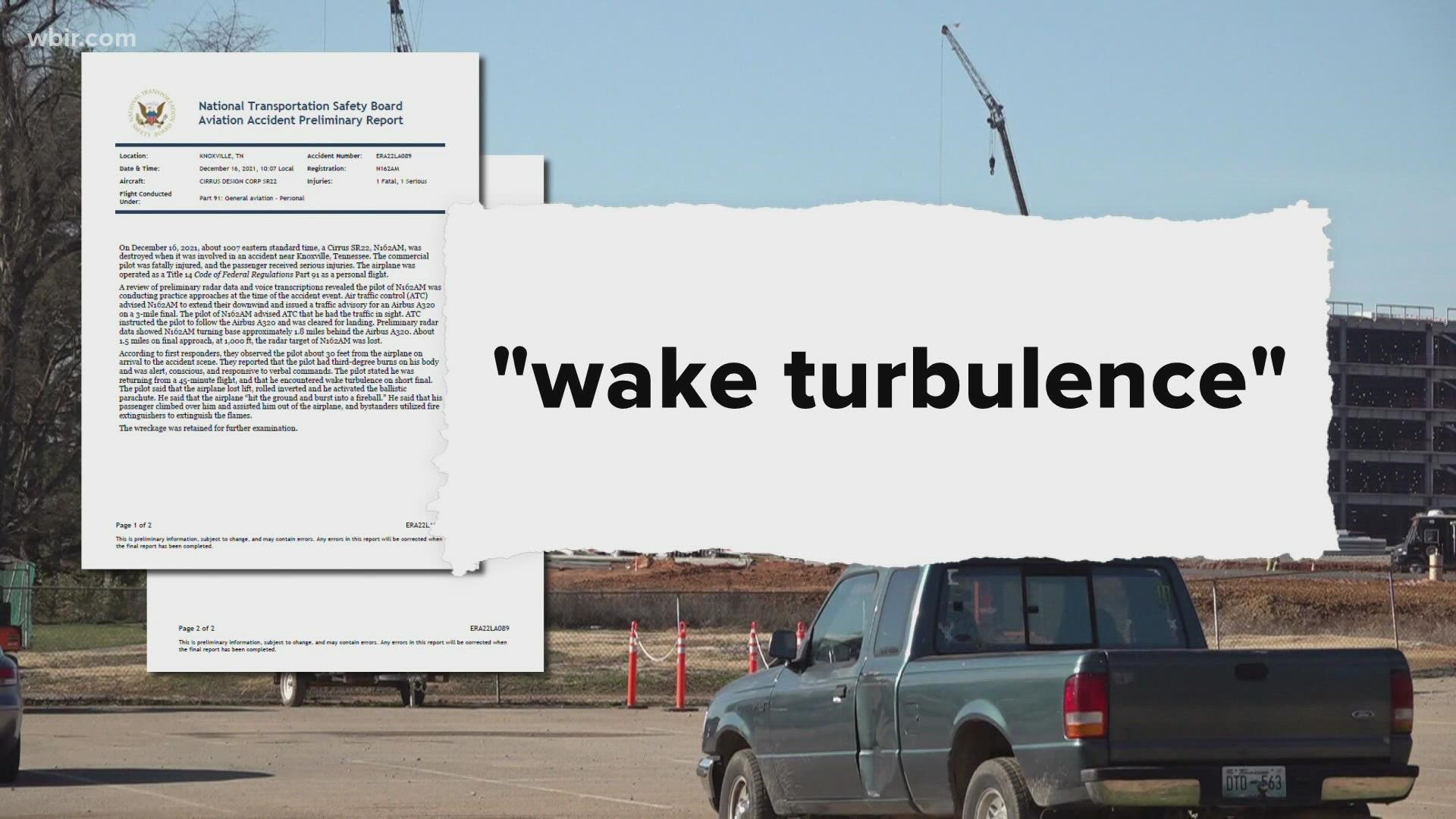KNOXVILLE, Tenn. — Before he died, Charles Schneider said he thought wake turbulence caused the crash of his Cirrus SR22, according to a National Transportation Safety Board preliminary report.
The report said Schneider told first responders the airplane lost lift, and he said the plane "encountered wake turbulence" on its way into McGhee Tyson Airport.
The NTSB said Schneider's SR22 followed an Airbus A320 into McGhee Tyson Airport. The Airbus A320 is significantly larger than the SR22. The Airbus is a normal passenger plane most flyers are accustomed to taking, while the SR22 is usually smaller than the wingspan of one of the planes.
The NTSB has not determined a cause for the crash.
The FAA said wake turbulence forms from two rotating vortices trailing behind an aircraft as they soar through the air. Larger aircraft generate more wake turbulence.
The CAVU Pilot, LLC flight instructor and commercial pilot Eric Dragonetti described it as the airplane acting as a blender towards the air. When a smaller aircraft follows a larger one too closely — they're exposed to the blender.
"It's like a tornado," Dragonetti said. "Now you're basically going through it like a blender, and you just ride the wave and it flips you over."
"Avoid wake turbulence," said Stan Szybillo, a private flight instructor with more than 9,000 flight hours. "It's a dangerous, dangerous thing."
To mitigate the effects of wake turbulence, the FAA suggests maintaining specific distances away from other airplanes based on their size.
Between the SR22 and the Airbus A320, the FAA guidelines suggest 4 Nautical Miles of separation. However, the NTSB report said there was only around 1.8 miles of separation between the two.
Both flight instructors said it's up to air traffic control and the pilot to work together to make sure the aircraft has enough separation.
In the preliminary report, the NTSB said Air Traffic Control issued a traffic advisory for Schneider, to be aware of the Airbus A320 landing at McGhee Tyson.
Dragonetti said after a warning like that, it's up to the pilot to maintain enough separation. However, he said even with the advanced GPS systems in airplanes now, it's hard for pilots to know how far they are from other aircraft.
10News asked the FAA what role Air Traffic Controllers played in the separation between the SR22 and the Airbus A320, they referred us to the NTSB. The NTSB said they could not comment because of an ongoing investigation.
RELATED: 911 calls reveal response after deadly small plane crash at Amazon center construction site

